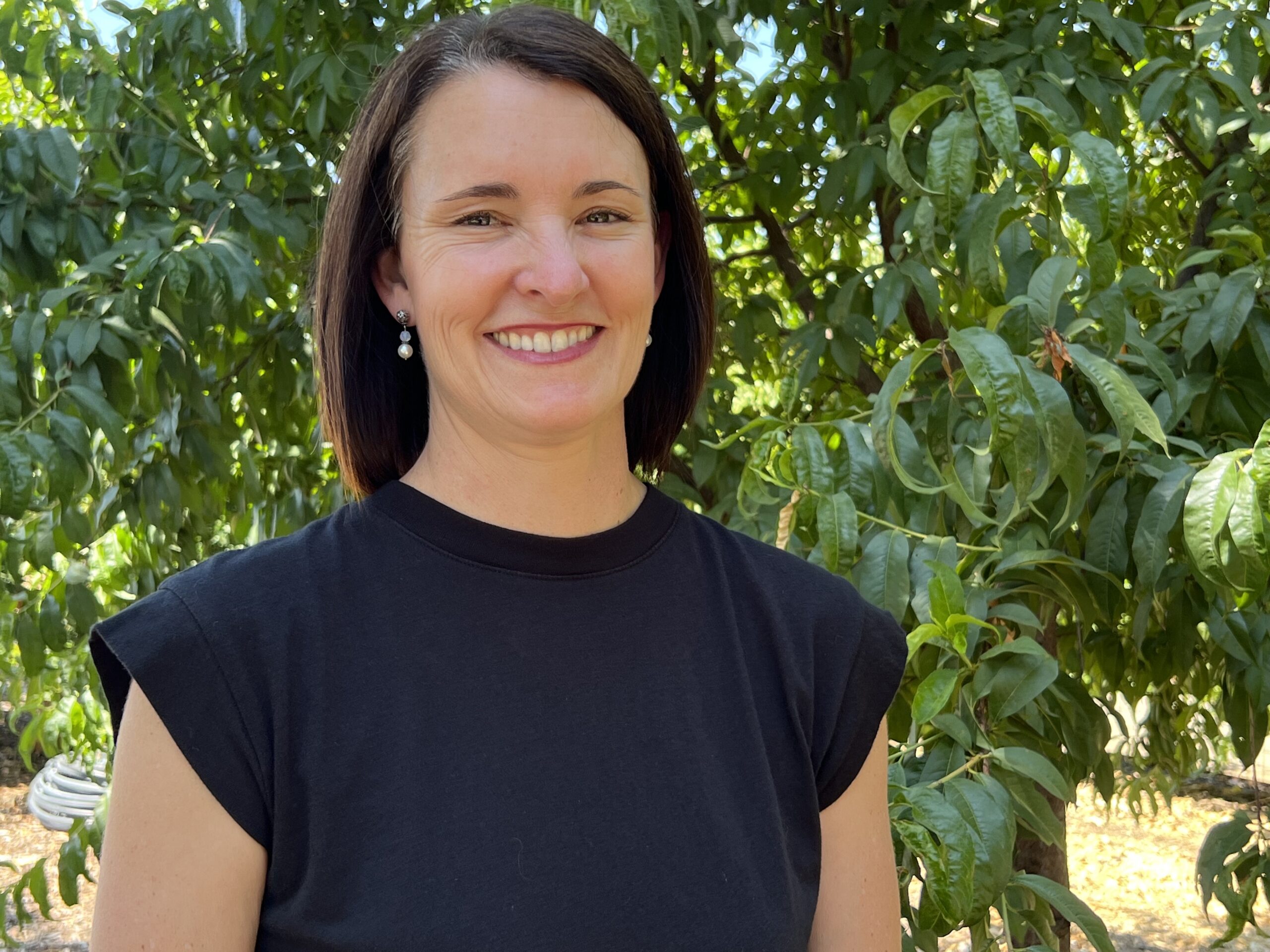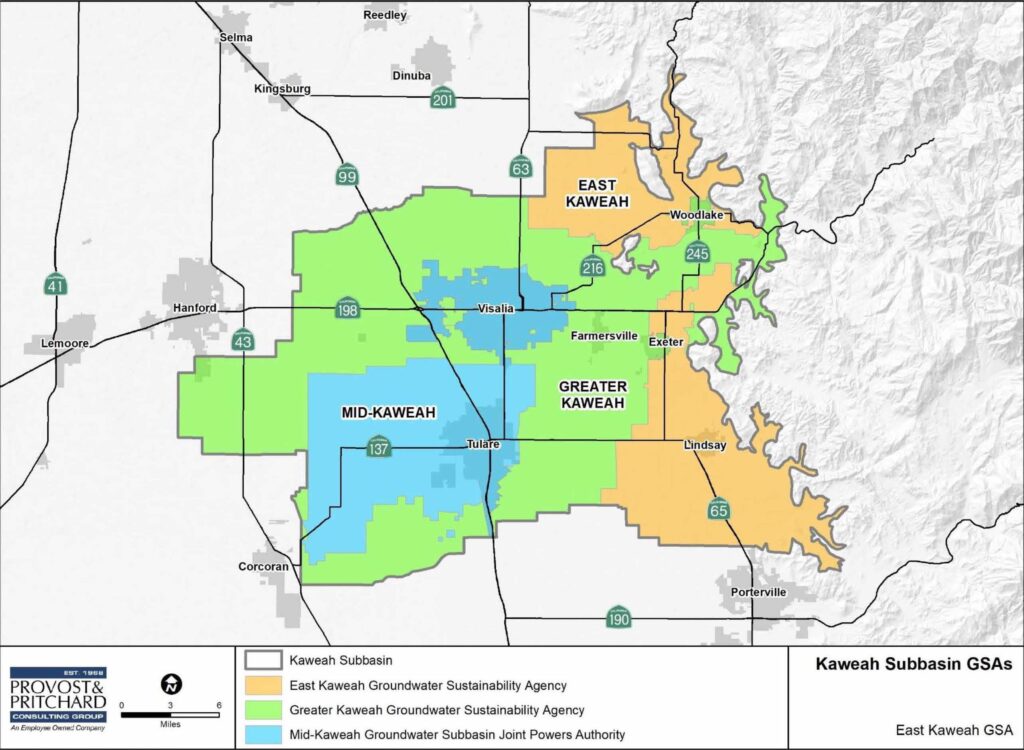Meeting: Greater Kaweah Groundwater Sustainability Agency
Date: Dec. 11, 2023
Agenda: CLICK HERE
Board packet: CLICK HERE
Main Topic: Discuss and advise staff regarding a possible amendment to the Rules and Regulations.
The Kaweah Subbasin is one of six in the San Joaquin Valley facing scrutiny by the state Water Resources Control Board, the enforcement arm of the Sustainable Groundwater Management Act. Noting the lack of coordination between the subbasin’s three groundwater sustainability agencies, East Kaweah, Mid Kaweah and Greater Kaweah, the technical advisors of each have been working to find consensus on basic water accounting mechanisms of precipitation and priority of use.
Precipitation:
East and Mid requested that Greater Kaweah adjust its precipitation allocation to match theirs; Greater Kaweah’s Rules and Regulations dictate that growers use actual rainfall totals rather than a 25-year rolling average as East and Mid do.
This has been difficult because each GSA has been using a different data set to determine precipitation amounts, according to Dave DeGroot, technical advisor for Greater Kaweah from 4 Creeks Consulting.
For example, there is an approximately seven-inch variation of rainfall annually from west to east across the Kaweah subbasin, which stretches from near Hanford on the west to Woodlake on the east. The East and Mid GSAs have access to surface water deliveries while a majority of growers in Greater Kaweah do not. The more precipitation in their annual allocation, the better.
In an effort to show more coordination, the technical teams are trying to agree on one data set.
De Groot said he and his team will draft their findings and make a recommendation by the end of December. The goal is to avoid a huge technical effort with each water allocation year.
Greater Kaweah manager Mark Larsen pointed out that the matter is complicated by the fact that landowners located directly across the street from each other will have different precipitation totals based on GSA boundaries and precipitation zones.
Directors voiced a need to keep the process as simple as possible for all involved.
DeGroot said the teams are trying to figure out a consistent historical data set, then move forward using Land IQ satellite data as a baseline.
“We’re getting really close, we have the policy drafted and we are working on coordinating with other GSAs to get as close to their policies and technical procedures to be as coordinated as we can,” DeGroot said.
Priority of use:
To avoid groundwater over pumping, growers must use different “types” of water in a specific order or face heavy fines according to the current Rules and Regulations. Directors questioned if this is necessary.
“Right now our policies are not flexible. We need to make them more flexible,” said director Joe Cardoza.
Cornell Kasbergen, grower and stakeholder committee member, stated: “There’s lots of confusion on priority of use. Just unlock it all.” And the sooner the better.
It was determined that the questions of how precipitation is allocated and priority of use need to go back to the stakeholder and technical advisory committees for discussion in January. Attorney Aubrey Mauritson said it would be best to make one revised version of the Rules and Regulations instead of a piecemeal approach.
No action was taken as the item was discussion only. Larsen anticipates the matter will be marked for action on the Feb. 12, 2024 meeting agenda.
Flood water credit:
The topic of flood water also generated much discussion. Larsen asked for “a general nod” from the board on the appropriate way to handle questions from growers who, at the request of various water agencies, intentionally flooded their land during 2023’s storms, sometimes incurring crop losses. They seek reimbursement of the ET, or evapotranspiration, that occurred as the flood waters dried up.
“It makes sense that the landowner shouldn’t be burdened with that excess ET that happened because their land was flooded,” Larsen said.
Audience members pointed out that other local GSAs have designated flooded land as fallow, wiping away ET.
Chris Tantau, vice chair, said the issue needs to be finalized with Kaweah Delta Water Conservation District, which manages water in the Kaweah watershed.
How to attend: Greater Kaweah GSA meets the second Monday of every month at 1 p.m. in the headquarters of the Kaweah Delta Water Conservation District, 2975 N. Farmersville Blvd. in Farmersville. The next meeting will be Monday, Jan. 8, 2024.
Members of the public are welcome to attend in person or via teleconference with: https://meet.goto.com/709505109 – Access Code: 709-505-109
Interested persons may also dial in to: +1 (872) 240-3212
Share this:
- Click to share on Facebook (Opens in new window)
- Click to share on Twitter (Opens in new window)
- Click to share on LinkedIn (Opens in new window)
- Click to share on Reddit (Opens in new window)
- Click to share on Tumblr (Opens in new window)
- Click to share on Pinterest (Opens in new window)
- Click to share on Pocket (Opens in new window)
- Click to share on Telegram (Opens in new window)
- Click to share on WhatsApp (Opens in new window)
- Click to print (Opens in new window)








